“As soon as there was nothing, there was everything.”
This evocative line captures a profound paradox that has puzzled humanity for centuries. It invites us to contemplate not just our existence, but the origins of all that we know. The question of how the universe sprang into being from a perfect vacuum—a void of nothingness—hints at a deeper reality. As we delve into this idea, we stand on the threshold of science and philosophy, where the lines blur and imagination takes flight.
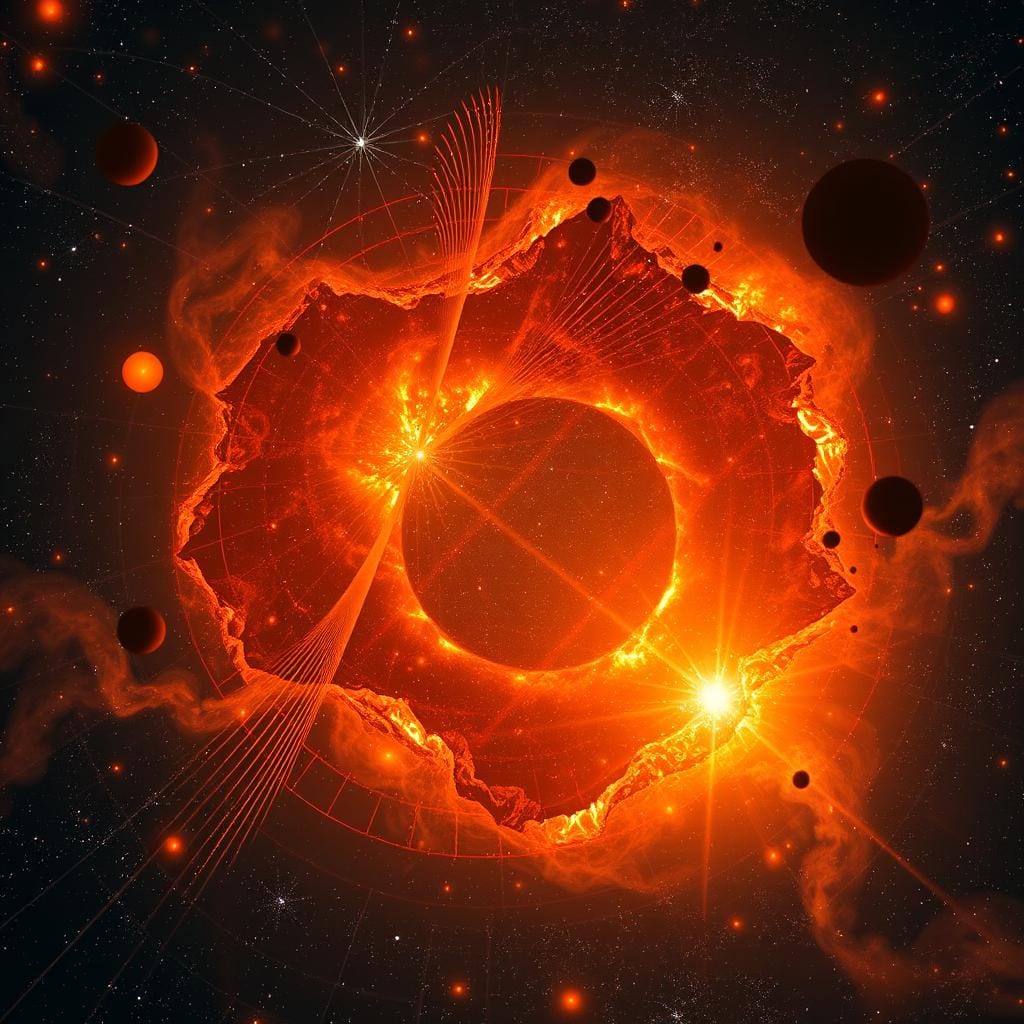
Earliest Moments
At the very earliest moments of the universe, the prevailing theory is encapsulated in the Big Bang. Before the universe as we know it began, there was a state that might best be described as a quantum vacuum. This vacuum isn’t empty in the conventional sense; rather, it is rich with potential—a sea of energy filled with fleeting virtual particles that pop in and out of existence. These quantum fluctuations represent the whisper of possibility within the abyss of nothingness, hinting that even in a void, chaos can give rise to order.
Energy and Matter
The relationship defined by E = mc2 serves as the foundation for understanding how matter can arise from energy. High-energy processes provide the conditions necessary for mass to emerge, illustrating a dynamic interplay between these two fundamental aspects of reality. Concepts from quantum mechanics and cosmology further explain these transformations, highlighting the fundamental unity of the universe’s fabric consisting of both energy and matter.
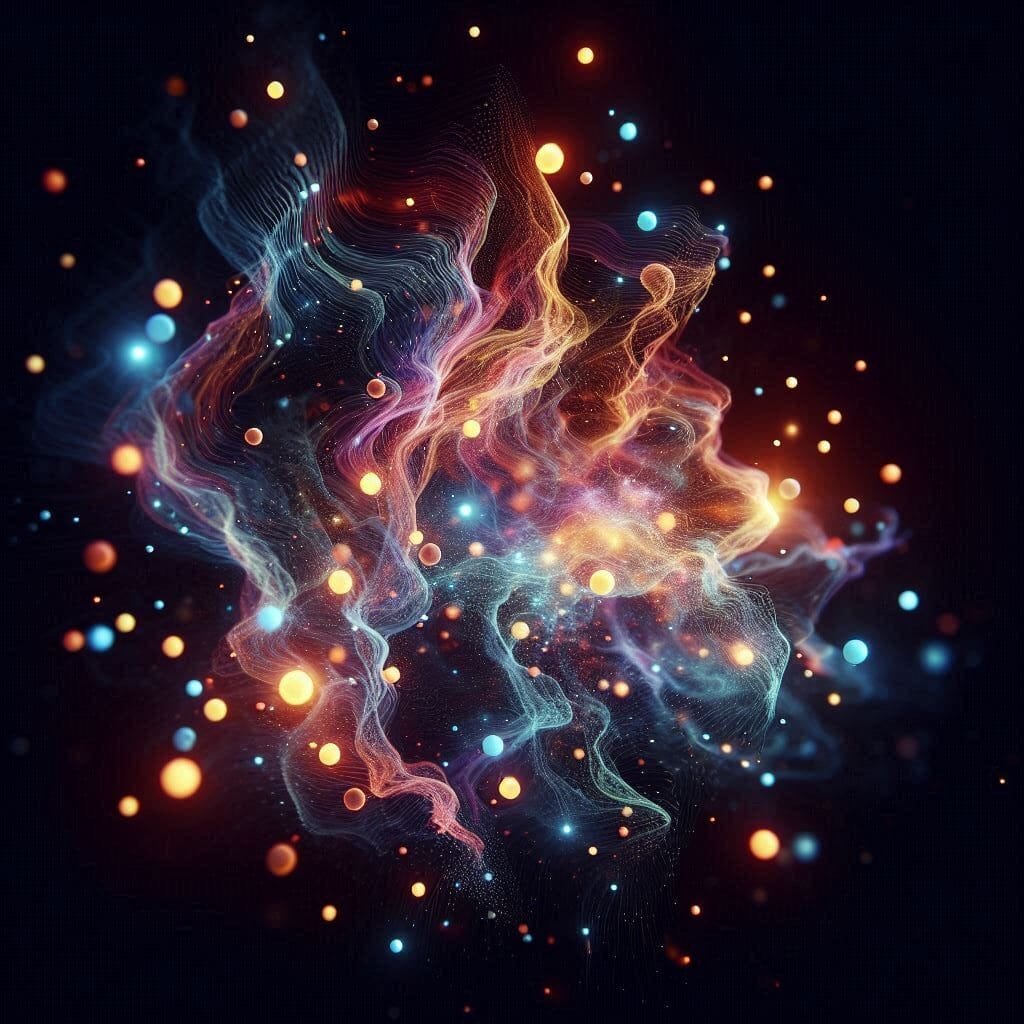
The Origins of Matter
Imagine a fragile vacuum chamber that is entirely empty of matter and energy. What processes could occur in such an extreme setting? Could this situation cause a collapse of the chamber, showcasing a release of energy that promotes the creation of particle pairs (virtual particles and antiparticles – standing as a balance for nothingness) which burst in and out of existence? Picture a valve that, when opened, allows everything to return into the chamber. In this context, the emptiness seems to call out for something to emerge. Similar to how our galaxy functions within the expansive realm of cosmic forces, might this theoretical vacuum chamber reveal essential truths about the nature of physical existence?
Everything from Nothing
Now, envision an ideal vacuum state representing absolute nothingness, just like the primordial Universe. Such a state implies the existence of potential and energy, a field characterized by a sort of constant „tension”. As this vacuum energy exists, it can induce fluctuations that spontaneously generate particles which probabilistically (some of them) survive without being cancelled out. In this regard because of the small distances between virtual particles they start to interact together with the already existing vacuum energy, placing the notion of „virtual particle density” as being essential for the birth of real particles, including some with mass. As these particles interact with each other and the energy of vacuum, they can form groups, attracting additional particles in a cascading effect. Might this theoretical framework bear resemblances to conditions preceding and following the Big Bang?
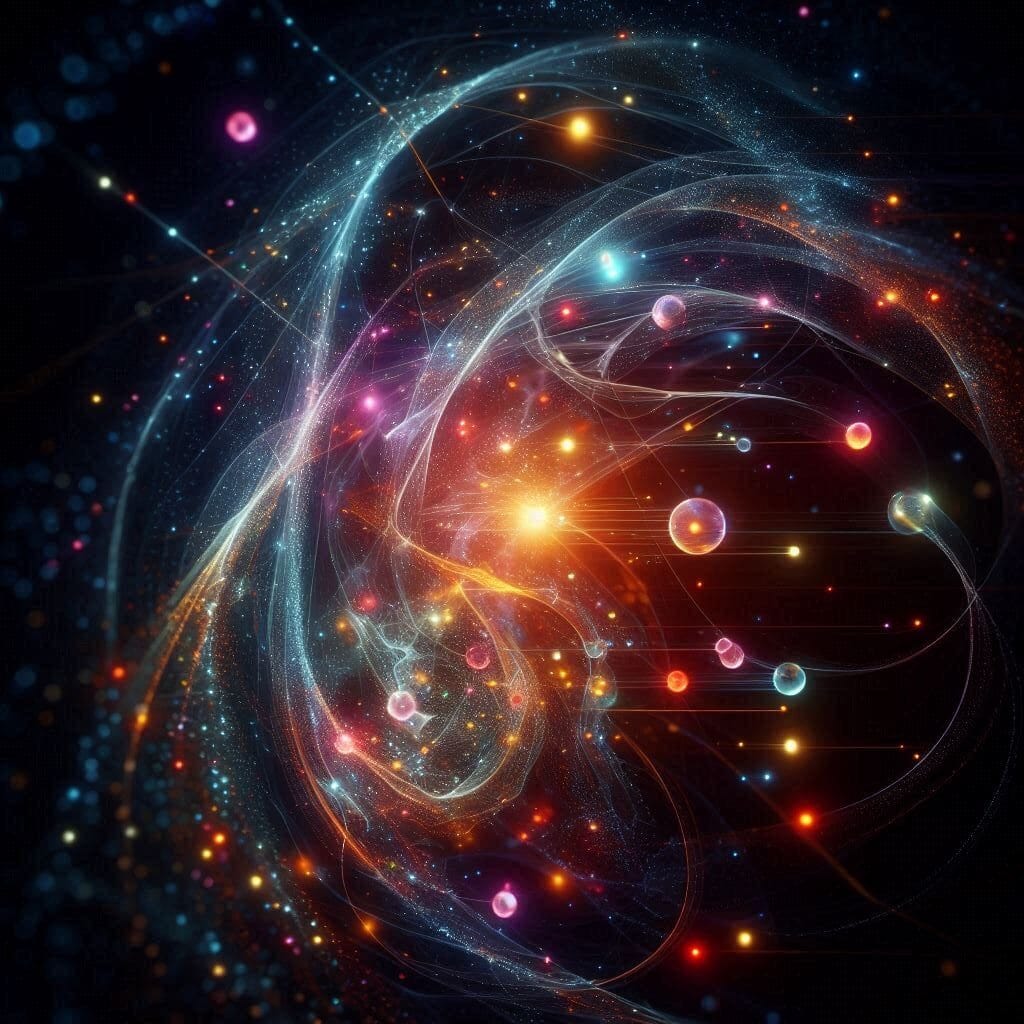
My Poetry
This notion resonates with my poetic vision—„As soon as there was nothing, there was everything.” These words echo the essence of creation. From the depths of that profound emptiness, energy could emerge, potentially igniting the formation of particles that would ultimately coalesce into stars, galaxies, and the myriad forms of life we know today.
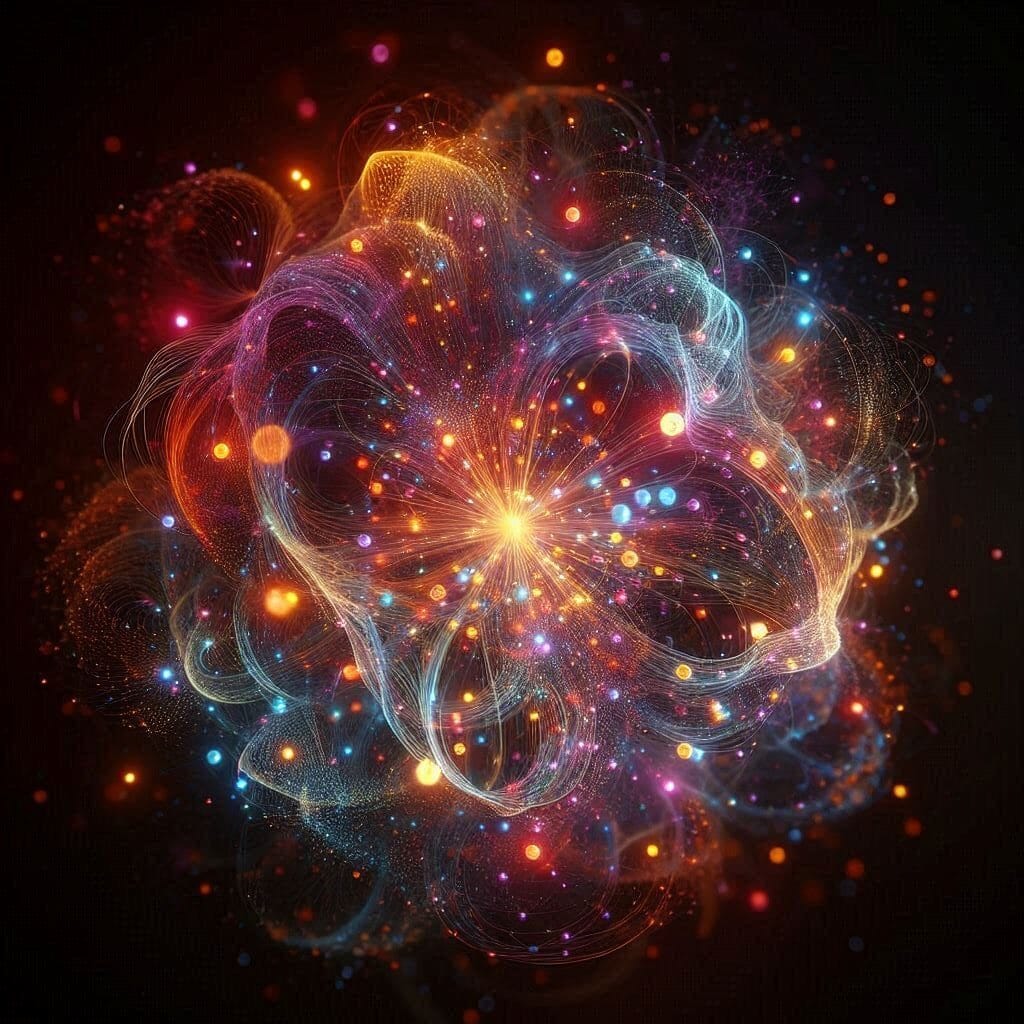
Embracing the Unknown
As we explore these ideas, we must remain mindful of the vast mysteries that still elude us. The true nature of the vacuum, the behavior of dark energy, and the mechanics of quantum fluctuations remain subjects of intense scientific inquiry. Researchers grapple with the enigma of what lay before the Big Bang, with opinions ranging from the concept of eternal inflation—a continuum of bubbles, or universes, emerging from quantum fluctuations—to theories that suggest the universe may have no beginning or end at all.
The Origins of all Life
In 1953, Stanley Miller and Harold Urey conducted a groundbreaking experiment that simulated conditions of the early Earth to explore how inorganic matter could give rise to organic compounds. They created an apparatus that included a mixture of water, methane, ammonia, and hydrogen, subjected it to electrical sparks to mimic lightning, and maintained a warm environment to promote chemical reactions. After a week, they discovered amino acids — the building blocks of proteins — forming from non-living, inorganic materials.
This experiment provided evidence that under the right conditions, simple inorganic compounds could transform into complex organic molecules. This idea supports the hypothesis that life could have originated from similar processes in the primordial Earth, leading to the emergence of living organisms. Furthermore, such findings suggest that the transition from inorganic to organic matter may not be unique to Earth, but could occur elsewhere in the Universe, promoting the view that life’s emergence might be a universal phenomenon governed by similar chemical principles. Thus, it underscores the possibility that life could arise in various environments across the cosmos, following a fundamental principle of chemistry and biology.

Contemplation
In our quest for understanding, we grapple with our own insignificance against the backdrop of the cosmos. Yet, isn’t it thrilling to consider that within the fabric of seemingly empty space lies the potential for everything? The very essence of existence could emerge from a dance between energy and entropy—a cosmic ballet that has played out over billions of years, leading us to this moment here and now.
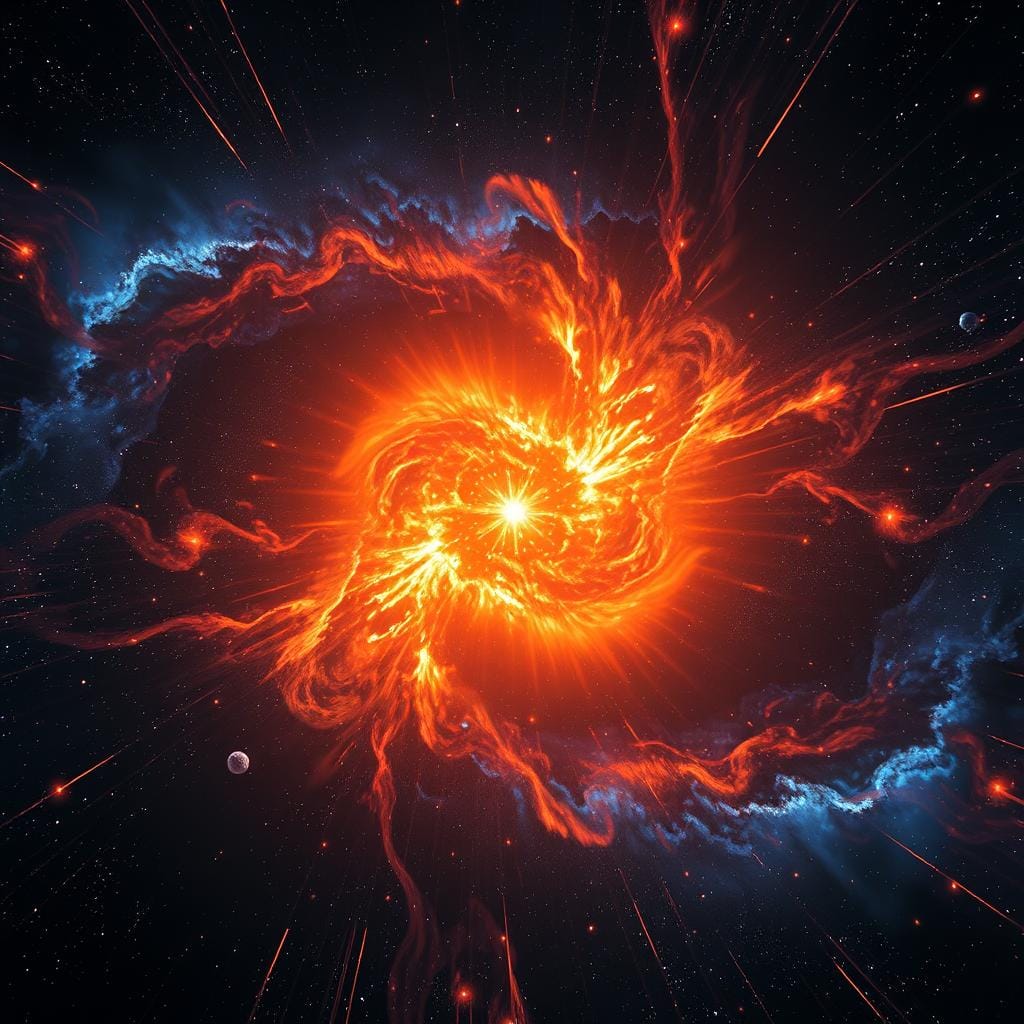
In the spirit of science fiction, which often flirts with ideas that eventually shape our reality, my poetic reflection invites us to engage with these questions. What if the intersection of vacuum, energy, and creativity is not just a scientific exploration but also an invitation for humanity to contemplate its own existence? How might our interpretations of this cosmic origin story inspire the narratives we weave in our own lives?
Final Thoughts
In the end, while we may not have definitive answers about the origins of the universe, the conversation itself can be a source of inspiration. From the quantum vacuum to the stars above, perhaps our understanding will continue to evolve, reshaping our belief systems and the stories we tell.
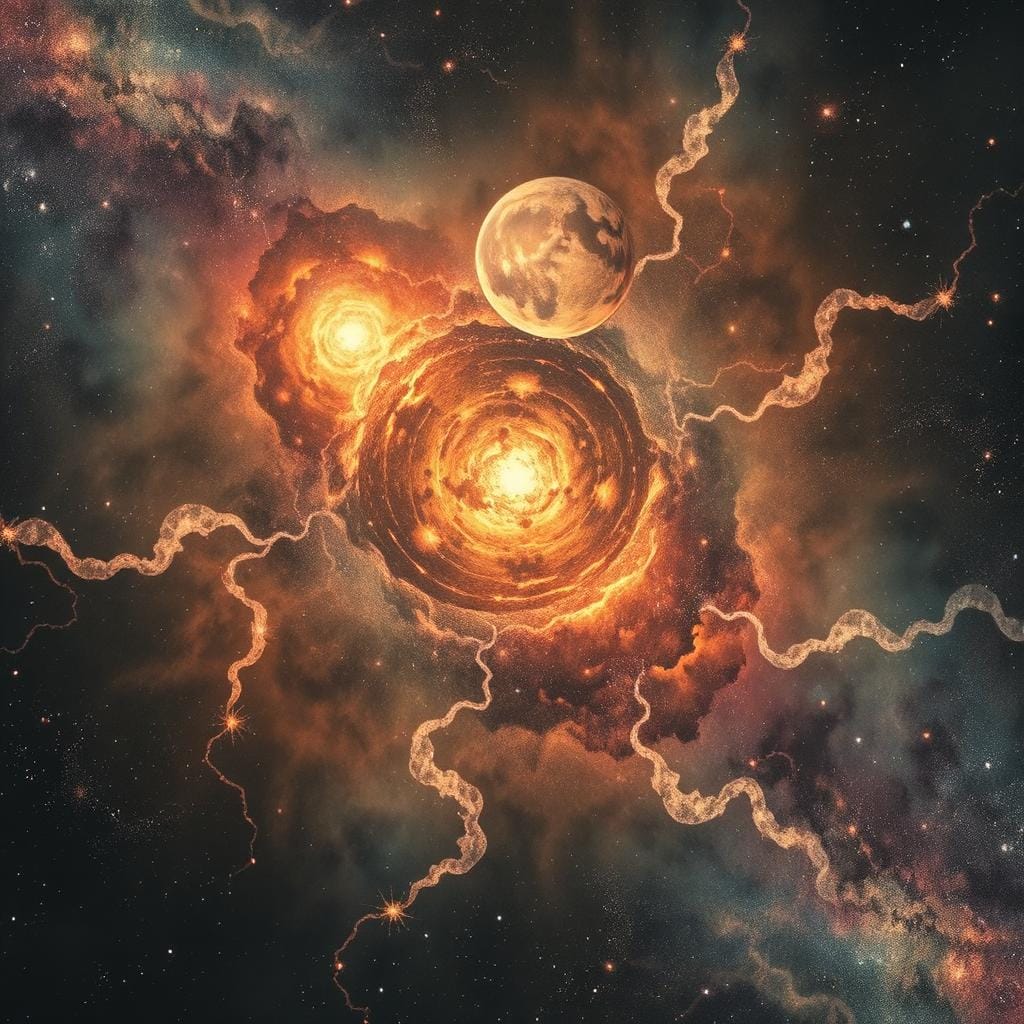
As we journey forward, let us remain open to the mysteries that lie ahead and embrace the possibility that from nothing, everything is indeed possible.
My equations:
I don’t even know if you can make anything reasonable out of this equation, but I am going to post it anyway:
E∞ = c2 · ρE · V∞ · t2 · (dM/Ve)
Ve = Vrvp
Where:
E∞ – infinite energy of the vacuum
c – universal speed limit (speed of light)
ρE – density of vacuum energy, in terms of distribution
V∞ – infinite volume of vacuum space
t – particle generation time (since implying infinity, it is an infinitely small amount)
dM – average distance between virtual particles
Ve – effective volume through which overlapping vacuum energy fields and virtual particle fields are contributing to real particle generation (since talking about „infinity”, it can be resumed to a single point)
Vrvp – volume of a vacuum space (region) filled with virtual particles
I think that if we have a big enough volume of empty space (a huge volume, not necessarily infinite), the contribution of vacuum energy could „ignite” a point like singularity, which could be resembled to a Big Bang. In this regard I even think that „our Universe” is one of many (maybe infinite) Universes which come into existence through Big Bangs, it is only that for something like a singularity (in the case of preceding the birth of a Universe) to emerge from „nothing” there needs to be a vast region of empty space characterized by vacuum energy. I suppose that the existence of matter causes an imbalance in the vacuum energy field, determining Big Bang preceding singularities not to come into existence. In order to replicate such conditions we would need either a large volume of vacuum or somehow increase the vacuum energy density, but this is impossible as of my knowledge.
And now, for a given region:
Er = c2 · ρE · Vr · t2 · (dM/Ve)
Ve = Vrvp
Where:
Er – vacuum energy of a given region in space necessary for particle generation
c – universal speed limit (speed of light)
ρE – density of vacuum energy, in terms of distribution
Vr – volume of the region of a vacuum space
t – particle generation time
dM – average distance between virtual particles
Ve – effective volume through which overlapping vacuum energy fields and virtual particle fields are contributing to real particle generation
Vrvp – volume of a vacuum space (region) filled with virtual particles
Here is another one implying virtual particle density and the average distance between these particles:
Epg = c2 · ρvp · Vrvp · ρE · t2 · dM
Ve = Vrvp
Where:
Epg – vacuum energy needed for real particle generation
c – speed of light
ρvp – virtual particle density
Vrvp – volume of a vacuum space (region) filled with virtual particles
ρE – vacuum energy density
t – time needed until real particle generation
dM – average distance between virtual particles
Ve – effective volume through which overlapping vacuum energy fields and virtual particle fields are contributing to real particle generation
Resulting from the two equations, we get:
ρvp · Ve= 1 (real particle)
Ve = Vrvp
Where:
ρvp – virtual particle density
Ve – effective volume through which overlapping vacuum energy fields and virtual particle fields are contributing to real particle generation
Vrvp – volume of a vacuum space (region) filled with virtual particles
As an example: if we have a virtual particle density (ρvp) of 100.000 virtual particles per m3 and an effective overlapping vacuum energy fields volume (Ve) of 10 cm3 (10-5 m3) we will get a real particle. As a side note, I am thinking that the region filled with virtual particles is somehow overlapping the surrounding vacuum energy field, so from here we get the notion of effective volume through which overlapping vacuum energy fields and virtual particle fields are contributing to real particle generation (Ve).
The vacuum energy field contributes to the virtual particle field, cancelling out the antiparticle field and resulting in an overall surplus of energy in the advantage of the virtual particle field (not the virtual antiparticle field!) See a representation of what I am thinking, below. Vacuum Energy + Virtual Particle Field – Virtual Antiparticle Field = Remaining Particle Field (Not Antiparticle!). This would build up and eventually lead to the creation of Real Particles.

I am thinking that, the Resulting Virtual particle field could also interact with the already existing Virtual Antiparticle field causing an imbalance in the process of annihilation between the Virtual Particles and Virtual Antiparticles. If the distance between Virtual Antiparticles is small enough, they could interact with each other and the Vacuum Energy field too. These interactions could already result in the formation of at least two different types of Real Particles.
As a final note, I leave here something to think about:
Imagine that particles are not static points but dynamic, pulsating energy fields constantly contracting and expanding at incredible speeds. In this view, the very essence of matter emerges from the interactions of these vibrating energy waves. When such pulsating waves meet, they can create new frequencies—analogous to new particles—born from the resonance of underlying energy fields.
This perspective suggests that what we perceive as „particles” are simply localized concentrations of energy, fleetingly forming and dissolving as they propagate through space. These energetic pulsations might be nature’s way of respecting the universal speed limit—the speed of light—by maintaining a constant, oscillatory dance rather than breaking physical laws.
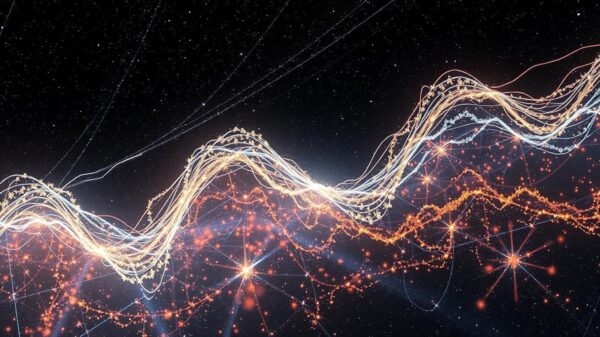
Such ideas echo concepts from quantum field theory, where particles are viewed as excitations of underlying fields, and their interactions lead to the rich tapestry of matter and energy we observe. It’s a fascinating way to visualize the universe as a symphony of pulsating energy waves, continuously creating and transforming the fabric of reality.
Remember this is a science fiction blog, so these equations are highly speculative, but I need to admit, I would be really happy if they would apply in reality.